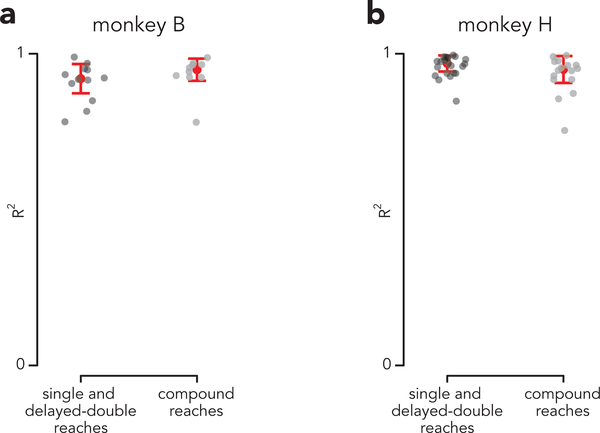Extended Data Fig. 7. The ability to predict preparatory activity from first-reach muscle activity does not differ for compound reaches, relative to single and delayed double-reaches.
The holistic hypothesis predicts that preparatory activity, during the instructed delay, should reflect the full compound reach. If so, it should not be readily predicted from the characteristics of the first reach alone. We thus asked whether the ability to predict preparatory activity from first-reach muscle activity was reduced for compound reaches. We used dimensionality reduction to summarize muscle activity via a small number of variables, and used these as regressors to predict the low-dimensional preparatory state (see Methods for full details). Prediction performance was quantified using cross-validation. a, Results for monkey B. Gray circles plot leave-one-out cross-validation performance for each individual condition. Red circles and error bars show the median and the median absolute deviation. Performance for compound reach conditions was not significantly lower than that for single and delayed-double reach conditions. Indeed it was slightly higher. Median R2 = 0.92 and 0.95 for single/delayed-double and compound reach conditions, respectively (p = 0.92, Mann-Whitney one-tailed test; n = 12 and 10). b, Same as a, but for monkey H. Performance for compound reach conditions was not significantly lower than that for single and delayed-double reach conditions. Median R2 = 0.97 and 0.95 for single/delayed-double and compound reach conditions, respectively (p = 0.07, Mann-Whitney one-tailed test; n = 22 and 16).

